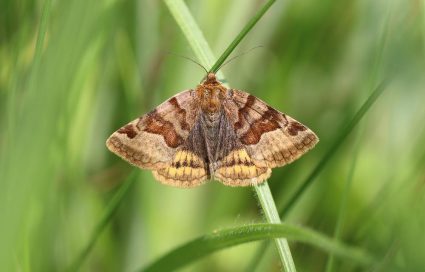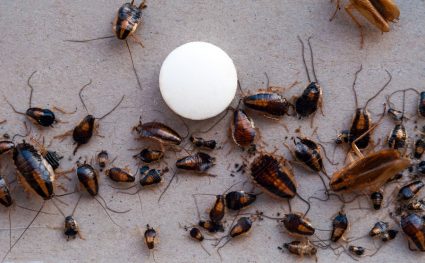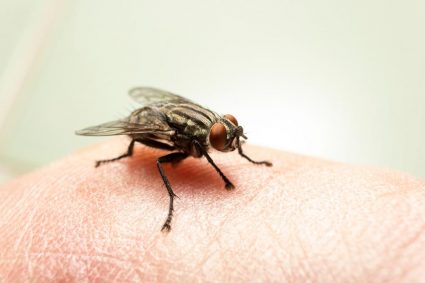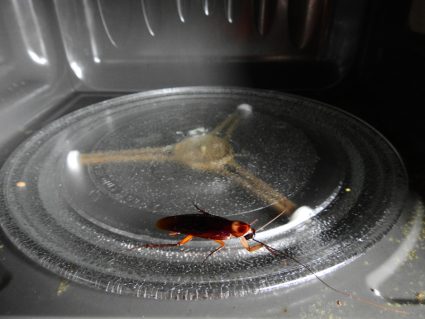
In this comprehensive guide, we will walk you through the process of making a boric acid spray for roaches. We’ll cover everything you need to know, from the science behind how boric acid works to eliminate roaches, to the step-by-step process of preparing the spray, and the safety measures you should take when using it.
To make a boric acid spray for roaches, mix 1 part boric acid powder with 1 part sugar, and then add water. Pour this mixture into a spray bottle and apply it to areas where roaches are commonly found, such as along baseboards, under cabinets, and in cracks and crevices. Always follow safety measures when using boric acid, including wearing protective gear, avoiding contamination of food and water, and keeping it out of reach of children and pets.
What is Boric Acid and How Does It Work?
Boric acid, scientifically known as orthoboric acid, is a compound of boron, oxygen, and hydrogen with the formula B(OH)3. It is a weak acid that appears as a white crystalline substance or a colorless crystal and is soluble in water. Boric acid is used for various purposes, including as a cleaning agent, preservative, and antiseptic.
When used as a roach killer, boric acid works by disrupting the roaches’ digestive system and damaging their exoskeleton, leading to dehydration and starvation. As roaches groom themselves, they ingest the boric acid adhered to their bodies, leading to their eventual demise. It is also effective because roaches eat other dead roaches, which helps spread the boric acid throughout the roach population. However, it is important to note that boric acid does not affect roach eggs, so it cannot completely eliminate a roach infestation on its own.
How to Make Boric Acid Spray for Roaches
To make a boric acid spray for roaches at home, follow these steps:
- Gather the ingredients: You will need boric acid powder, sugar, and water. You can find boric acid powder in stores or online.
- Mix the ingredients: Combine 1 part boric acid powder with 1 part granulated sugar in a clean bowl.
- Prepare the spray: Mix 2 tablespoons of boric acid and 2 cups of sugar with 1 cup of water. Stir the mixture until the boric acid and sugar are dissolved.
- Transfer the mixture to a spray bottle: Pour the boric acid and sugar solution into a spray bottle for easy application.
- Apply the boric acid spray: Spray the mixture in strategic locations near roach activity sites, focusing on areas where roaches are commonly found, such as along baseboards, under cabinets, under sinks, and in cracks and crevices.
- Monitor and reapply as needed: Check the treated areas regularly and reapply the spray if you continue to see roach activity. It may take a few days for the boric acid to start working within the pests’ bodies, but it is very effective in killing cockroaches once it does.
Safety Measures When Using Boric Acid
When using boric acid spray in a home environment, it is essential to take several safety measures to protect yourself, your family, and pets from potential hazards. Here are some precautions to follow:
- Read and follow label instructions: Always adhere to the product label’s directions and recommended dosages for safe and effective pest control.
- Wear protective gear: Use gloves, masks, and other appropriate protective equipment during the application to minimize exposure.
- Prevent contamination: Ensure that boric acid does not contaminate food, water, or surfaces that come into direct contact with these items. Clean up thoroughly after application and dispose of excess powder properly.
- Keep out of reach of children and pets: Store boric acid products in a secure location, away from the reach of children and pets.
- Apply appropriate quantities: Avoid using excessive amounts of boric acid, as this can increase the risk of inhalation and irritation.
- Avoid application near ignition sources: Boric acid dust can extinguish a pilot light, creating an explosion hazard due to escaping gas. Ensure that electric and gas services are shut off in the treatment area before application.
- Protect skin and eyes: Wear long-sleeve shirts, full-length pants, coveralls, or a lightweight spray suit, waterproof gloves, and a face shield or goggles to prevent skin or eye contact with spray residues or vapor.
- Be cautious around sensitive areas: Be careful when spraying near fruit trees, vegetable gardens, flowers, and clothing to prevent contamination.
By following these safety measures, you can minimize the risks associated with using boric acid spray in your home environment.
Conclusion
While boric acid spray can be an effective method for controlling roaches, it is important to be aware of the potential side effects and risks associated with its use. Proper application, safety precautions, and additional pest control measures are necessary to ensure the effectiveness and safety of using boric acid spray for roaches. If handled correctly, this DIY pest control solution could be a cost-effective way to manage a roach problem at home.
Frequently Asked Questions
How often should I reapply the boric acid spray?
Reapplication frequency depends on the severity of the infestation. However, a general rule of thumb is to reapply the spray every few weeks or whenever roach activity is observed.
Can I use the boric acid spray outdoors?
Yes, you can use boric acid spray outdoors. However, it should be applied in dry weather as water can dilute the spray, reducing its effectiveness.
Are there any alternatives to using boric acid spray for roaches?
Yes, alternatives include using commercial roach baits, insecticide sprays, or hiring a professional pest control service. However, these methods may not be as cost-effective as using a boric acid spray.
How long does it take for the roaches to die after coming into contact with the boric acid?
It may take a few days for the boric acid to start working within the pests’ bodies, but it is very effective in killing cockroaches once it does.
Can boric acid spray harm other insects or pests?
Boric acid is toxic to many types of insects and pests, not just roaches. Therefore, it can potentially harm other insects or pests if they come into contact with the spray.
Is boric acid harmful to humans or pets if ingested?
Yes, if ingested in large quantities, boric acid can be harmful to humans and pets. It’s important to store it out of reach of children and pets, and avoid contaminating food and water sources.












